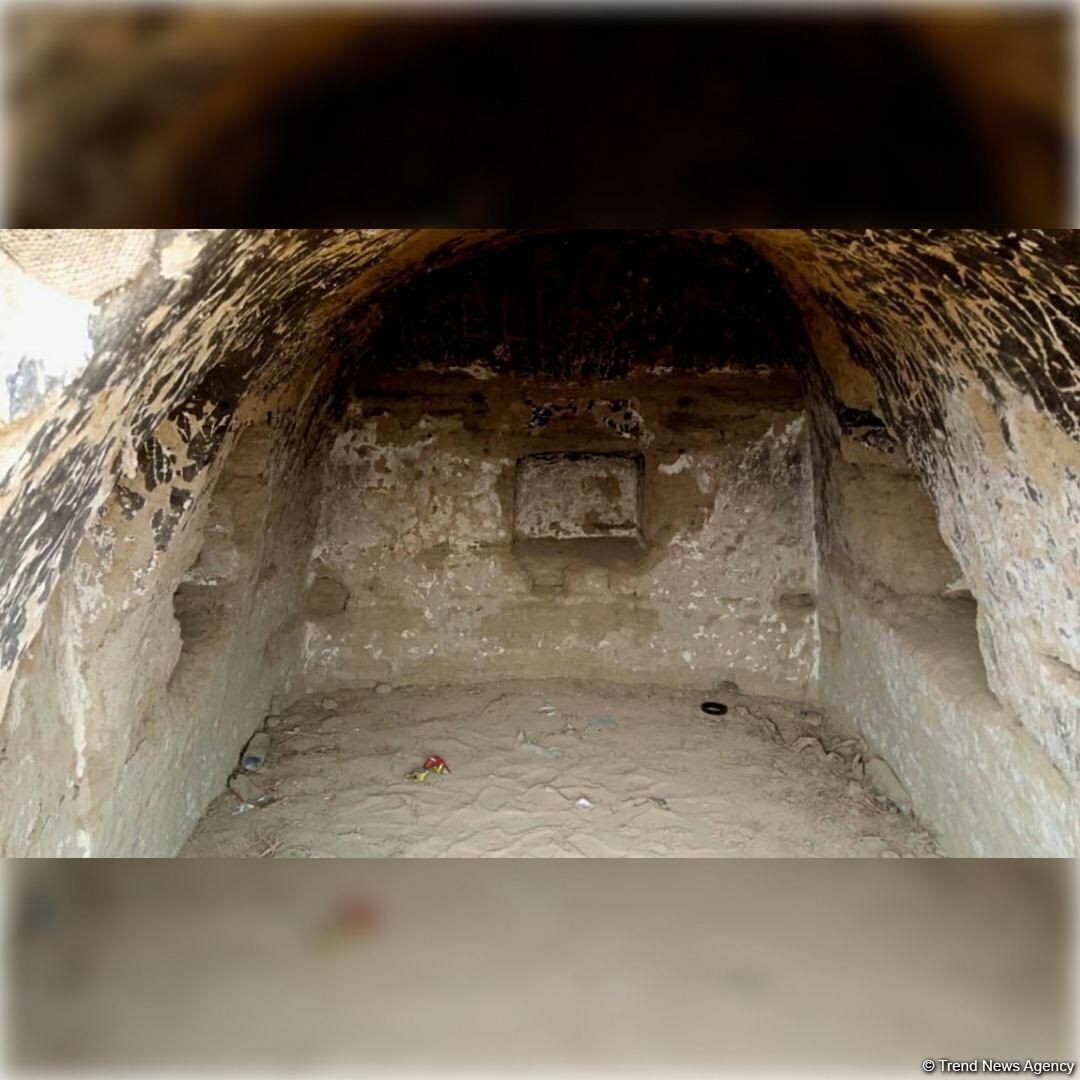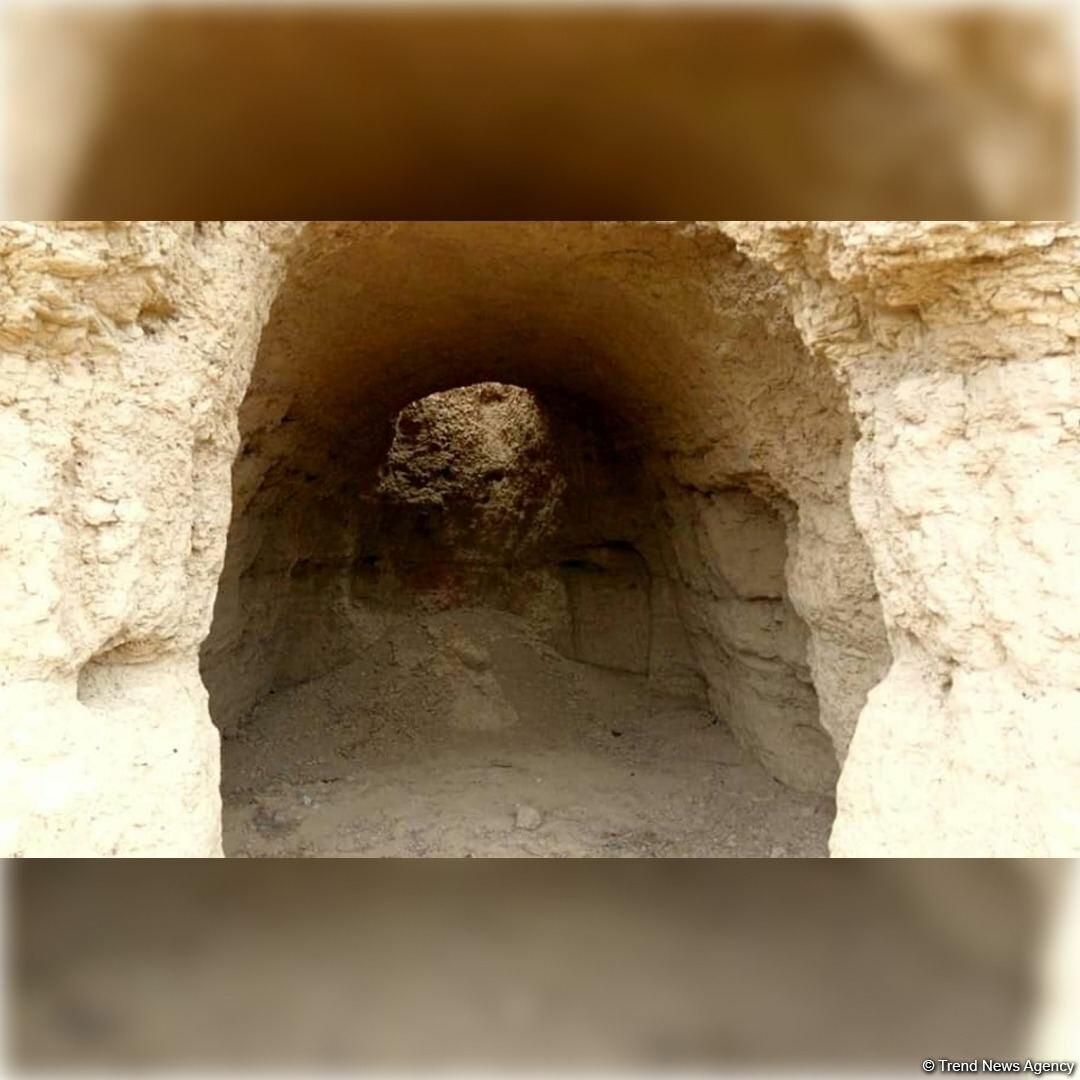Azerbaijan’s relics: Ancient caves discovered outside Sumgayit [PHOTO]
![Azerbaijan’s relics: Ancient caves discovered outside Sumgayit [PHOTO]](https://www.azernews.az/media/2022/10/24/trend_sumqayit_magaralar_241022_1.jpg)
By Sabina Mammadli
Traces of Azerbaijan’s fascinating rich history are scattered in its culture, literature, and architecture. Among other things, Azerbaijan’s ancient legacy lies in its famous stone drawings and archeological findings, which are evidence of life at the time. One such piece of history is numerous caves across the country.
On October 24, ancient caves were discovered near the settlement of Sumgayit station off the city of Sumgayit off Baku. Additionally, along with the caves, the remains of a caravanserai, a roadside inn where travelers (caravaners) could rest and recover from the day's journey, were also discovered.
Commenting on the findings, Spokesperson for the Azerbaijani State Service for the Preservation, Development, and Restoration of Cultural Heritage under the Culture Ministry Fariz Huseynli said that the Shabran Regional Department of the State Service is conducting research in the area.
"In general, comprehensive research is needed in this area. In the near future, it’s planned to conduct a joint inspection of the territory with archaeologists," he added.
Moreover, information has been spread in social media about the discovery.
Caves of various historical significance have been found all around Azerbaijan. In this way, the country’s famous Azykh Cave is one of the most ancient human habitats in the world.
The area of Azykh Cave, located in Khojavend District‘s Azykh village, is 800 square meters.
In 1960, the Palaeolithic Archaeological Expedition of the Azerbaijan National Academy of Sciences under the leadership of Mammadali Huseynov discovered the Azykh cave. In 1968, the low jaw bone of a human related to the Neanderthal type was found there. Studies of this fragment of the jaw showed that the age of the finding is 350,000-400,000 years, making it one of the oldest proto-human remains found in the world.
Scientists believe that the bone belongs to a girl about 18 years old. This age was considered old for that period, as the average life expectancy was 20-22 years.
During the Armenian occupation, illegal excavations had been carried out in the cave.
Azerbaijan’s Damjili cave is another archeological treasure with evidence of prehistoric human life in the region.
Damjili is the largest of the 30 caves of the Stone Age discovered on the territory of Gazakh District in the mid-1950s. Located at the foot of Avey Mount, its area is about 460 square meters and the height is four meters.
The cave, opened in 1953 by Azerbaijani scientists Mahammadali Huseynov and Russian scientist Zamyatin, is the first monument of the Stone Age discovered in Azerbaijan. It also has similarities with the ancient settlement of Goytepe of the Neolithic period, which is located in the neighboring Tovuz District.
A number of various stone tools, arrowheads, flint knives, and bones of animals were discovered in the cave during excavations. Traces of ochre were also found in the cave. The sediment layers, in which the ochre was found, are mixed with younger ones, which suggests that the use of ochre dates back to the Mousterian culture.
--
Sabina Mammadli is AzerNews’ staff journalist, follow her on Twitter: @SabinaMmdl
Follow us on Twitter @AzerNewsAz
Here we are to serve you with news right now. It does not cost much, but worth your attention.
Choose to support open, independent, quality journalism and subscribe on a monthly basis.
By subscribing to our online newspaper, you can have full digital access to all news, analysis, and much more.
You can also follow AzerNEWS on Twitter @AzerNewsAz or Facebook @AzerNewsNewspaper
Thank you!


